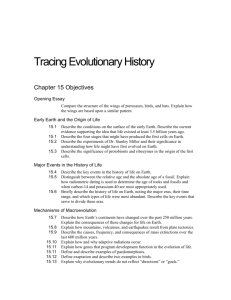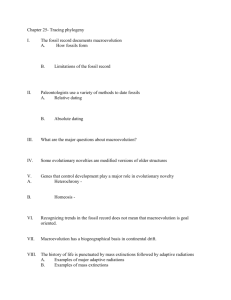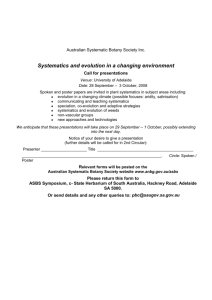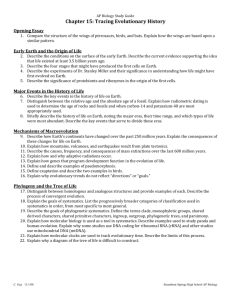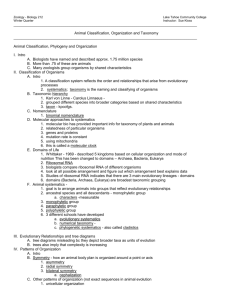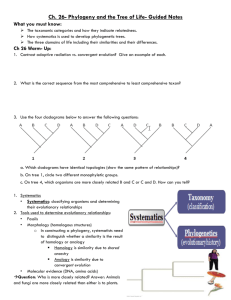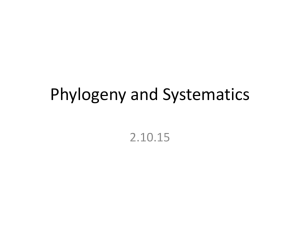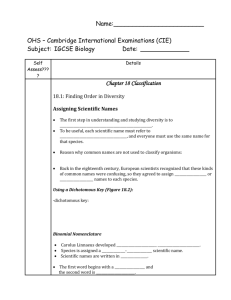Chapter 15 Objectives
advertisement
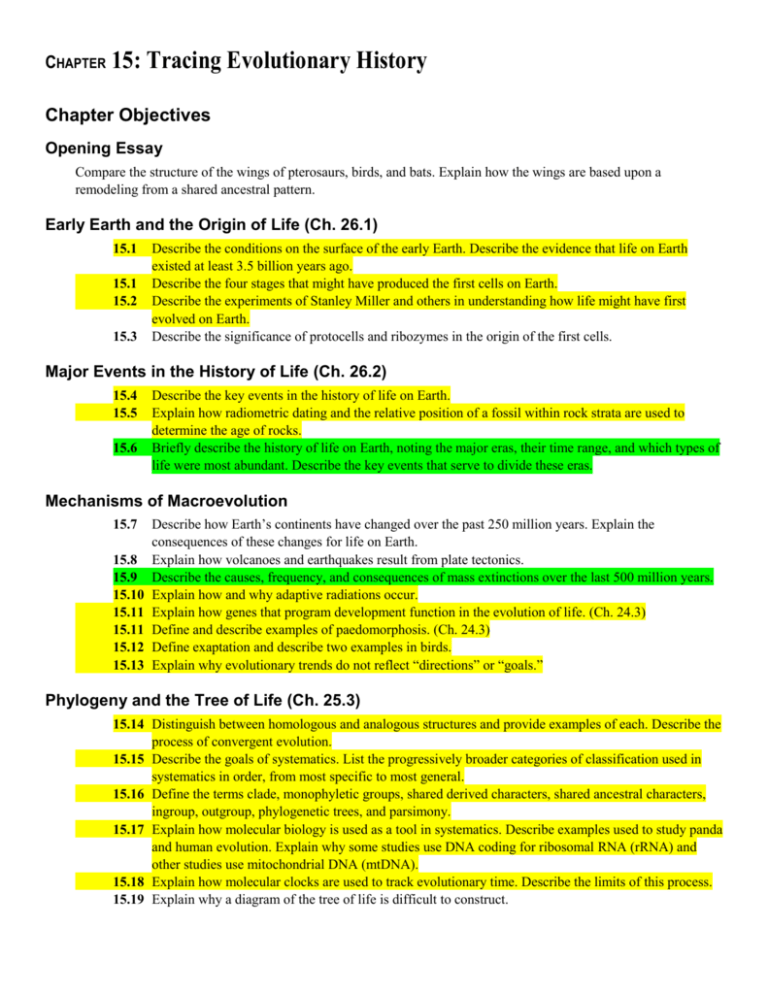
CHAPTER 15: Tracing Evolutionary History Chapter Objectives Opening Essay Compare the structure of the wings of pterosaurs, birds, and bats. Explain how the wings are based upon a remodeling from a shared ancestral pattern. Early Earth and the Origin of Life (Ch. 26.1) 15.1 15.1 15.2 15.3 Describe the conditions on the surface of the early Earth. Describe the evidence that life on Earth existed at least 3.5 billion years ago. Describe the four stages that might have produced the first cells on Earth. Describe the experiments of Stanley Miller and others in understanding how life might have first evolved on Earth. Describe the significance of protocells and ribozymes in the origin of the first cells. Major Events in the History of Life (Ch. 26.2) 15.4 15.5 15.6 Describe the key events in the history of life on Earth. Explain how radiometric dating and the relative position of a fossil within rock strata are used to determine the age of rocks. Briefly describe the history of life on Earth, noting the major eras, their time range, and which types of life were most abundant. Describe the key events that serve to divide these eras. Mechanisms of Macroevolution 15.7 15.8 15.9 15.10 15.11 15.11 15.12 15.13 Describe how Earth’s continents have changed over the past 250 million years. Explain the consequences of these changes for life on Earth. Explain how volcanoes and earthquakes result from plate tectonics. Describe the causes, frequency, and consequences of mass extinctions over the last 500 million years. Explain how and why adaptive radiations occur. Explain how genes that program development function in the evolution of life. (Ch. 24.3) Define and describe examples of paedomorphosis. (Ch. 24.3) Define exaptation and describe two examples in birds. Explain why evolutionary trends do not reflect “directions” or “goals.” Phylogeny and the Tree of Life (Ch. 25.3) 15.14 Distinguish between homologous and analogous structures and provide examples of each. Describe the process of convergent evolution. 15.15 Describe the goals of systematics. List the progressively broader categories of classification used in systematics in order, from most specific to most general. 15.16 Define the terms clade, monophyletic groups, shared derived characters, shared ancestral characters, ingroup, outgroup, phylogenetic trees, and parsimony. 15.17 Explain how molecular biology is used as a tool in systematics. Describe examples used to study panda and human evolution. Explain why some studies use DNA coding for ribosomal RNA (rRNA) and other studies use mitochondrial DNA (mtDNA). 15.18 Explain how molecular clocks are used to track evolutionary time. Describe the limits of this process. 15.19 Explain why a diagram of the tree of life is difficult to construct.

